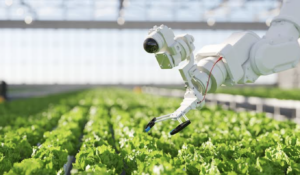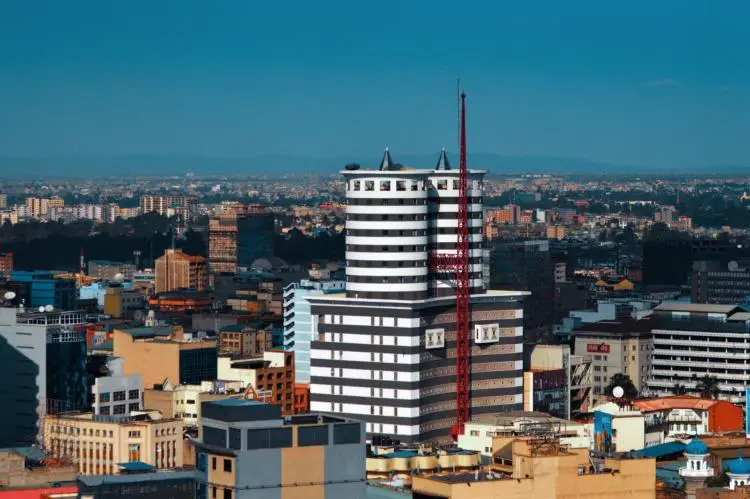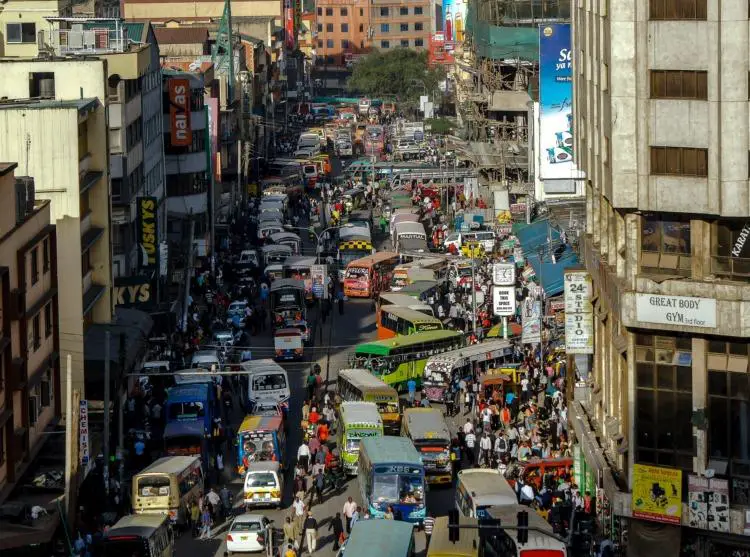- Africa’s new dawn: the rising role of digital and AI in agriculture
- Can Dangote Refinery Transform Africa Energy Ambition
- Gallup Survey: 80 per cent of Kenyan Workers Are Disengaged and Seek New Opportunities
- Madagascar Man Freed from 5KG Tumor After 15-Year Struggle
- How women in Africa are perceived and treated
- Sugar consumption in Kenya to Increase to 1.23 Million Tonnes
- Can Somalia and Turkey Oil deal Bring Change in Somaliland
- Remittances to Kenya dropped to $371.6 million in June, marking a six month low
Browsing: Kenyan economy
- Official data shows that diaspora remittances to Kenya increased to $412.4 million in January 2024, compared to $372.6 million in December 2023.
- This represents an 18% jump compared to similar month in 2022 as well as 10.7% month-on-month increase in inflows.
- The cumulative inflows for the 12 months to January 2024 totalled $4.3 billion compared to $4 billion in the same period in 2023, an increase of 5.3 per cent.
Kenyans in the diaspora sent home more money in January compared to December, as the strong start of the year signals easing inflationary pressures, mainly in key sourcejock strap brock bowers jersey jordan max aura 4 nike air jordan 1 elevate low oregon football jerseys black friday wig sale best human hair wigs for black females latex hood custom stitched nfl jersey sit top kayak nike air max 90 futura jock strap jock strap air max 270 women alpinestars …
- Kenya’s economic growth will average 5.2% in 2023 and 2024, notwithstanding current global and domestic shocks
- The World Bank said the baseline assumes a robust growth of credit to the private sector, continued low COVID-19 infection rates and a near-term recovery in agricultural production
- The report also noted that the country’s economy continued to rebound from the pandemic in 2022, with the real gross domestic product (GDP) increasing by 6% year-on-year in the first half of 2022
A new report has revealed that Kenya’s economic growth will average 5.2% in 2023 and 2024, notwithstanding current global and domestic shocks.
In its latest finding on the East African nation, the World Bank said the baseline assumes a robust growth of credit to the private sector, continued low COVID-19 infection rates, a near-term recovery in agricultural production, and high commodity prices favourable to Kenyan exports.
“We expect these developments to catalyse private …
While massive and spectacular infrastructure projects seem to point that East Africa’s largest and most vibrant economy remains in the right direction, increasing state debt, soaring fuel and commodity prices and high unemployment threaten to water down the economic footprint of Kenya’s fourth president Kenyatta.…
- A report by Cytonn Investments expects 2022 to register lower investor sentiments
- The performance would be affected by several reasons, including a cautious stance by investors who will be monitoring the election proceedings
- The report also foresees an increase in Eurobond yields as concerns over Kenya’s high debt-to-GDP ratio persists
As Kenya heads to General Elections this August, economic experts now expect 2022 to register lower investor sentiments.
In a new report, Cytonn Investments said the performance would be affected by several reasons, including a cautious stance by investors who will be monitoring the election proceedings.
The report also foresees an increase in Eurobond yields as concerns over Kenya’s high debt-to-GDP ratio persists and an expected depreciation of the Kenyan currency as a result of increased oil prices globally and high debt servicing costs.
“The investment performance is largely affected by the market sentiments on the macro-economic indicators of an …
The index signalled a solid decline in operating conditions, albeit one that was slower than those seen in April 2021 and during the second quarter of 2020.
“Economic activity started 2022 on a subdued note as evidenced by the Stanbic PMI reading that fell to the lowest level in nine months. The reading was below 50 which indicated a deterioration in business conditions from December,” Kuria Kamau, Fixed Income and Currency Strategist at Stanbic Bank commented.
While export demand grew marginally, domestic demand fell significantly as client spending was negatively affected by rising inflation and a resurgence in Covid-19 due to the Omicron variant, he noted.…
- Kenya’s continued recovery trajectory in 2022 would be supported by several factors, among them, improved business recovery
- According to Cytonn, there will be a recovery of businesses from the adverse effects of the pandemic, owing partly to the continued reopening of external trading partners
- The gradual increase in access to affordable credit will also support the economy’s continued recovery
The Kenyan economy may continue its recovery trajectory with the projected GDP growth expected at a range of 4.3 per cent – 4.7 per cent.
A report by Cytonn Investments indicates that the growth will be on the back of gains made in 2021. Using data from the Kenya National Bureau of Statistics, the investment firm says the average GDP growth rate for the three quarters in 2021 is 6.9 per cent, an increase from the 0.8 per cent contraction recorded during a similar review period in 2020. The average GDP …
- The banking sector in Kenya was stable and resilient in the third quarter of 2021
- The Quarterly Economic Review for the period ending 30th September 2021 indicates that the sector’s total assets increased by 2.4% to KSh 5.8 trillion in September 2021, from KSh 5.7 trillion in June 2021
- Loans and advances accounted for 54.8% of total assets in the third quarter of 2021, a 0.1% point increase from 54.7% of total assets in the second quarter
Kenya’s banking sector remained stable in the third quarter of 2021, said freshly released data by the Central Bank of Kenya (CBK).
In its Quarterly Economic Review for the period ending 30th September 2021, CBK indicates that the sector’s total assets increased by 2.4% to KSh 5.8 trillion (US$ 51 billion) in September 2021, from KSh 5.7 trillion (US$ 50 billion) in June 2021.
CBK said the increase was mainly because of a …
- EY Kenya expects the Kenyan economy to rebound and grow by 5 per cent in 2022
- The country is currently in the throes of elections, drought and the negative effects of the COVID-19 pandemic
- The growth will be achieved at the back of various intervention measures rolled out in fighting the COVID-19 pandemic
Global Audit firm, EY Kenya said it expects the Kenyan economy to rebound and grow by 5 per cent in 2022.
Though the country is currently in the throes of elections, drought and the negative effects of the COVID-19 pandemic, EY Kenya said that the fundamentals should position the country to defy negative growth patterns as earlier projected.
The firm said that the growth will be achieved at the back of various intervention measures that have been rolled out by the government in fighting the covid 19 pandemic.
“Kenya appears to have weathered this pandemic and the …
- Kenya’s headline figure climbed to 51.4 in October, from 50.4 in September.
- Readings above 50.0 signal an improvement in business conditions on the previous month.
- The increase was largely driven by the normalization of business spending following pandemic-related measures.
The Kenya Purchasing Managers’ Index ticked higher in October, as output growth strengthened for the first time in five months and new business continued to grow.
According to the Markit Stanbic Bank Kenya survey, the country’s headline figure climbed to 51.4 in October, from 50.4 in September.
Readings above 50.0 signal an improvement in business conditions on the previous month, while readings below 50.0 show a deterioration.
During the period, new business volumes continued to rise, extending the current run of growth that began in May.
For the first time in five months, the seasonally adjusted Output Index ticked higher in October, thus signalling a faster expansion in Kenyan business activity.…
Kenya is commonly considered to be East Africa’s financial hub. Its economic growth has increased steadily in the last decade due to significant political, structural and economic reforms. The SME sector stands out as the key driver of Kenya Vision 2030 which seeks to transform the country into a newly industrialized middle income country by 2030. SMEs are crucial in encouraging industrialization and helping to eradicate poverty by creating employment and raising income levels.
Social and Economic Benefits
SMEs complement large firms as subsidiary units; because they are more flexible they can effectively meet the needs of the market. They have a facilitative role in entrepreneurial activities across the country in both urban and rural settings, thus contributing immensely towards the socio-economic development and transformation of the country. SMEs are can ensure the achievement of sustainable development goals (SDGs), promotion of inclusive economic growth and sustainable industrialisation and fostering as …











